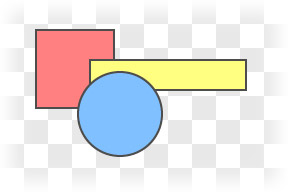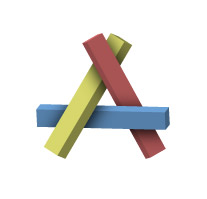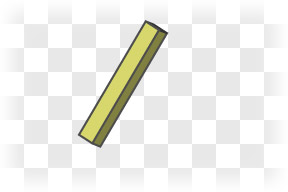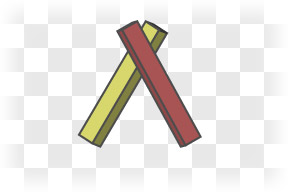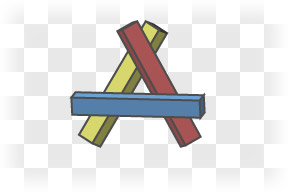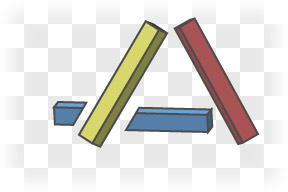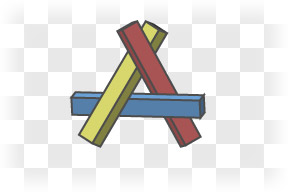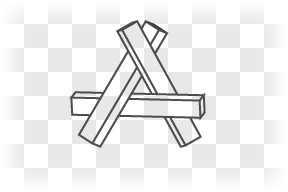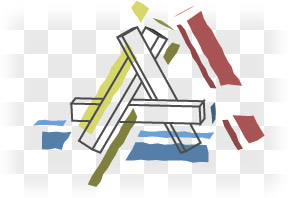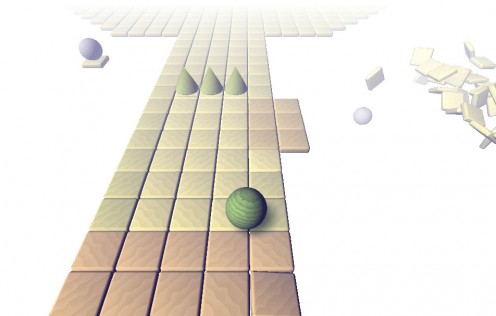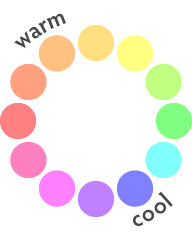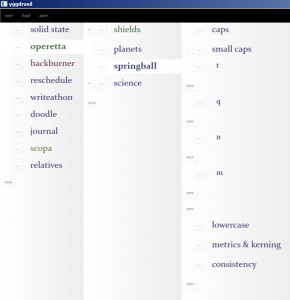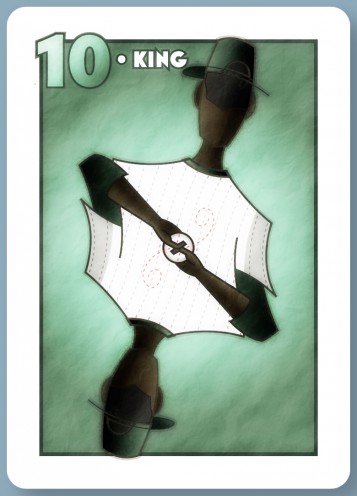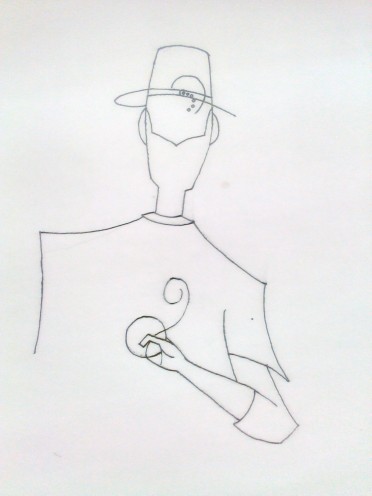All done with my first Ludum Dare. You can see my game here.
So have some ruminations.
theme
I really could not have been less enthused about the theme. It was ‘evolution’, and while that’s frequently used as a synonym for ‘growth’, when I hear that word, I think of the strictly biological definition of evolution: groups of genetically dissimilar organisms dying off, and leaving the survivors to pass on their genes, slowly changing the genetic makeup of a species over time, not because the individuals themselves are changing but because the selection of individuals is changing. Growing up in an area where there was a lot of uninformed anti-evolution sentiment, I’m very particular about how I use that word; it’s impossible to have a rational discussion about evolution as a theory if you’re not precise about your terms (theory being another word that doesn’t mean to regular people what it means to science grr).
Anyway. From that point of view, evolution is an inherently impersonal concept. You’re stuck with the genes you’re born with, and you either breed or you don’t.
Which is icky since I’d set myself the goal of making something with a relatable story.
However, after much head scratching, I decided that instead of making the individual — the player — change over time, I’d make the level design evolve based on the player’s choices.
Conceptually, that seemed pretty cool, and a great solution to the problem at hand… but it needed a lot more fleshing out, as I’ll get into later.
scope
The first thing they tell you at the game jams I’ve been to is to be careful to limit your scope.
The level breeding mechanic I had was pretty limited in scope: you wandered down a skinny path with various pits and obstacles and were presented with a fork; each path on the fork would be a variation of the path just traveled. So if you hit a fork and the path on the left had lots of pits and the fork on the right had lots of trees, and you picked the left path, the next fork would present you with options with lots of pits.
From a technical point of view, this was simple enough. I had my branching, evolving paths by the middle of the first day.
The problem was, I wanted to use this to tell a love story kindasorta related to The Road not Taken.
You’d be presented with diverging paths, and while you could not ordinarily ‘travel both / and be one traveler’, as the poem goes, you could find a traveling companion. Then, you would travel together, but you could also travel separately, and share your experiences of two paths, because companionship isn’t always about being together; sometimes, it’s about your experiences apart, because, fundamentally, the only way we can experience everything is to share our limited experiences with others…
…in many ways the scope of this story is massive. Not because it’s epic or generation-spanning or has lots of locations, but because of the emotional complexity of what’s supposed to be going on. Communicating my themes verbally is hard enough; communicating them just through visuals and mechanics would be a truly herculean undertaking.
Getting this to work, I realized very late in the jam, would rely on a couple of difficult-to-express intangibles:
- The player has to have a longing to go back and take the paths they missed before.
- Once the player and their companion are on separate paths, the player has to have a richer experience because of it; the sort of thing that is richer than the sum of its parts.
I barely touched any of this. My one nod to the themes I was going for is the night/day transition on the zig-zag at the beginning and the end; as you’re going down the zig-zag the first time, you’re supposed to learn that, on the upcoming fork, you’re picking day or night. And while you’ll learn that you’re stuck with that choice no matter what direction you take on subsequent forks, at the end, you get a chance to pick again with your new companion and that’s supposed to be kind of rewarding.
In terms of communicating something to the player purely through the physical shape of the level, I’m actually pretty proud of this, if only as a first step. It needs many more more mechanical, visual and aural supports — a sun & moon, changing music, scenery, obstacles, etc. to work properly.
visuals & music
I’m generally happy with the look of this. The pastel wooden blocks are playful and go with the music; the shattering path effect was a big hit with everyone else at the jam.
I also finally managed to implement a simple version of the crossfading & random music structure I wanted for my Jennifer Ann contest submission years ago. Normally the music has this wood-block sound, but when you get close to a potential companion, some chimes fade in. The music is structured in such a way that when the wood blocks are playing whole notes, the chimes are playing faster notes, and vice versa. So the companion, musically, completes you. 🙂
mechanics
I’ve only done two game jams and the one Jennifer Ann contest, but I noticed something after this jam was over: when thinking of ideas after learning of the themes, I tend not to start with existing game genres at all. Like, I don’t think about how the theme could be applied to a platformer or an RTS or an arena shooter. I think about the theme, and think about what you can do with a game engine and a keyboard and a mouse that fits the theme.
I try to reinvent mechanics from whole cloth.
While this may lead to more original ideas, this sort of thing takes a lot of time and is not necessarily appropriate for a jam. There are things in platformers and shooters that are just known to work, and perhaps more importantly, known to be fun. So even if your story doesn’t work and your approach to theme doesn’t work, well, you could still have a workable game if you start with an existing genre.
Further more, people can just look at something and know how to play it if it fits into established genres. This whole building-a-path-to-your-companion thing I was trying for just wasn’t terribly obvious or communicated very well.
I may have to try starting with a standard genre next time.
Or not. Maybe I just like high-risk experimental stuff.
technical stuff
From a technical point of view, this went extraordinarily well. I barely had to look at the Unity documentation, and only referred to code I’d written for other projects once, for a shader that didn’t even make it into the final product.
There were only two technical hurdles really.
First, I didn’t know how to get your companion to wander down a different path from you once they followed you to a fork.
The second issue was state management. There’s this whole sequence of things you have to do, to win:
- Create a solid path to your companion.
- Get close enough to a companion to get them to start following you.
- Keep the companion from falling while they follow you.
- Cross a fork while you have a companion.
And basically, the game had no centralized idea where you were in the process. If a companion started following you, new companions would still appear on new paths. If your companion fell, the game wouldn’t know something bad had happened. There was all this stuff going on, but none of it meant anything to the game. Which made it really hard to debug.
summing up
Generally, I consider the game, as a game, a failure; it’s just not clear enough what’s going on and the story just isn’t communicated to the player, at all.
However, as with most of these things, I learned a lot, had fun, and and glad I did it.
Looking forward to the next jam.
